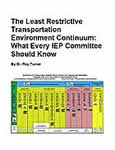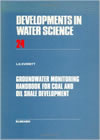All Articles
Accident Investigation & Reconstruction
Insurance Coverage Analysis
Accident Prevention & Safety
Intellectual Property
Addiction Issues & Substance Abuse
International Trade
Alternative Dispute Resolution (ADR)
Internet Marketing
Computers
Laws & Procedures
Cosmetology: Hair / Makeup
Machinery
Counseling
Market Research
Crime Scene Investigation
Marketing
Criminology
Medical Malpractice
Dental - Dentistry
Medical Records Review
Design
Medicine
Digital / Crypto Currency
Mining
Documentation Examination & Analysis
Nonprofit Organizations
Elder Abuse
Pain Management
Elevators - Escalator - Automatic Doors
Pharmaceuticals
Engineering
Plastic / Reconstructive / Cosmetic Surgery
Family Issues
Politics
Finance
Pools and Spas (Recreational)
Foreign Affairs - Geopolitics
Premises Liability
Forensic Analysis
Product Liability
Forgery & Fraud
Professional Skills
Gems & Jewelry
Search Engine Optimization (SEO)
Human Factors
Sexual Abuse - Molestation - Harassment
HVAC - Heating, Ventilation, Air Conditioning
Slip, Trip & Fall
Insurance
Toxicology
More...

COMPUTER-FORENSICS-PAGE ARTICLES MAIN PAGE
. Contact Us if you are interested in having your work published on our website and linked to your Profile(s).
All Articles
Aquatics Safety
Healthcare
Artificial Intelligence (AI) / Machine Learning (ML)
Hotels & Hospitality
Automotive - Vehicular
Hydrology
Branding - Brand Management
Insurance
Chemical Industry
Insurance Coverage Analysis
Cosmetology: Hair / Makeup
Intellectual Property
Crime Scene Investigation
Investigation & Surveillance
Crisis Management
Jails - Prisons - Correctional Facilities
Dental - Dentistry
Logistics - Reverse Logistics
Design
Mediation
Digital / Crypto Currency
Nursing
Domestic Violence
Obstetrics - Gynecology (OBGYN)
Dram Shop Liability
Oil & Gas
Elder Abuse
Pharmaceuticals
Electrical - Electrocution
Plants & Trees
Energy - Utilities
Politics
Engineering
Psychology
Enterprise Resource Planning (ERP)
Radiology
Environment
Securities
Exercise & Fitness
Sexual Abuse - Molestation - Harassment
Expert Witnessing
Slip, Trip & Fall
Failure Analysis
Spirituality
Forensic Analysis
Supply Chain Management
Forgery & Fraud
Terrorism - Homeland Security
Hazardous Materials
Yoga
More...
Featured Articles
There are no active articles here at this time. Please use the search bar, try another category, or contact us if you would like to contribute an article.
This Article is unavailable. Contact Us
Search articles by title, description, author etc.
Sort Featured Articles
Featured resources
The Do Able Renewable Home, Making...
by John Salmen, AIA
Least Restrictive Transportation...
by Ray Turner, EdD
Groundwater Monitoring Handbook for...
by Lorne G. Everett, PhD
Follow us










